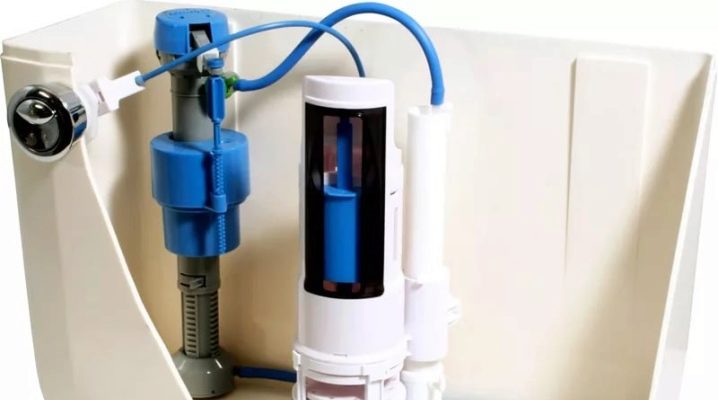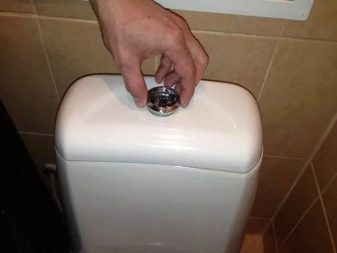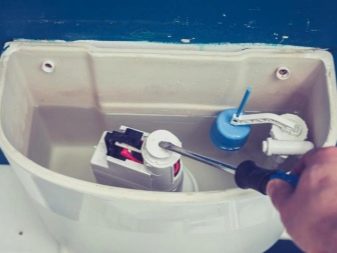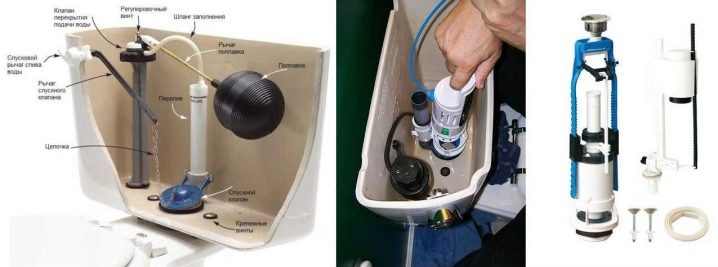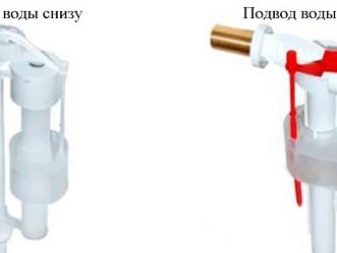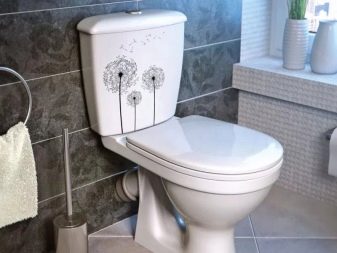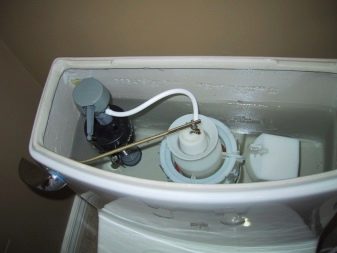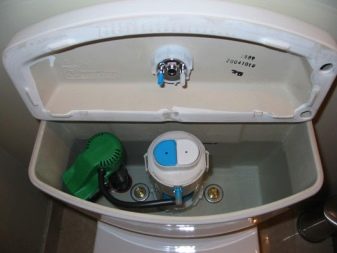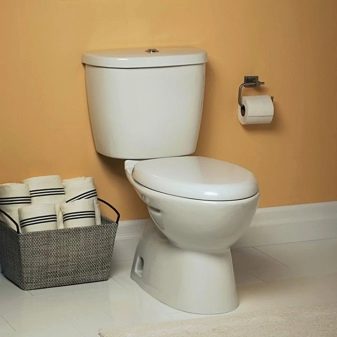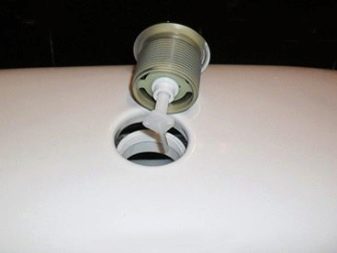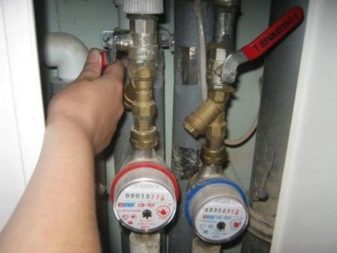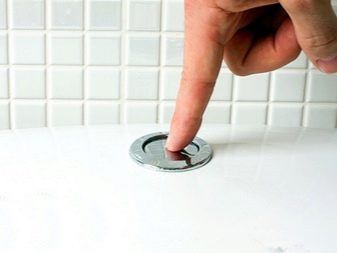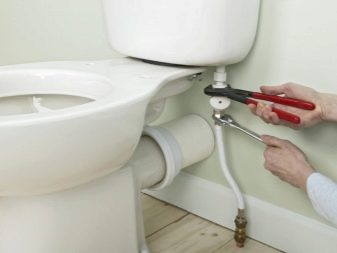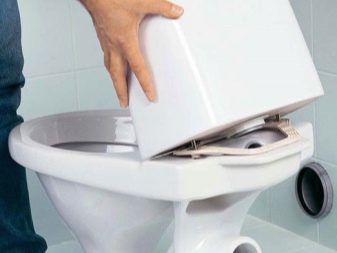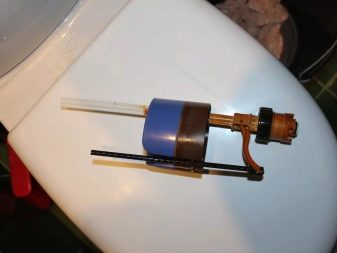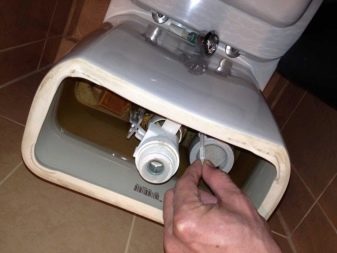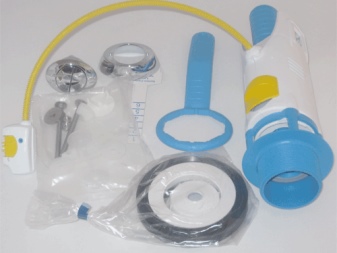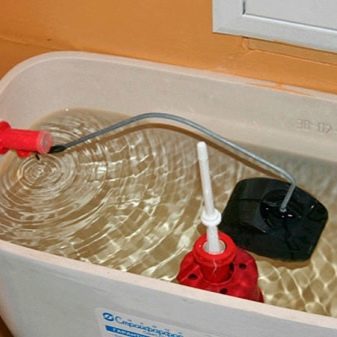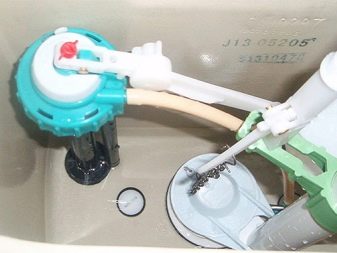The flush mechanism for a toilet bowl with a button: device and repair tips
Even very high quality plumbing equipment often fails. First of all, this is due to the intensive use of devices. Minor damage to the toilet can lead to serious consequences if the problem is not promptly fixed. The easiest way to entrust the repair work to the plumbing master, however, knowing the principle of the mechanism of the toilet, you can fix it yourself. The flush mechanism for the toilet cistern with a button: the device and repair tips will be discussed in more detail in this article.
What is it made of?
The toilet is a sanitary equipment, which consists of a bowl and a water tank. The bowl is attached to the wall or mounted on the floor.The water tank is a drainage tank of sanitary fittings and is located above the bowl. The insides of the tank are a mechanism that performs the functions of water collection and its supply for flushing.
Drain tanks may have some differences. First of all it concerns the devices that are used for draining: a button or a trigger lever. Let us dwell in more detail on the button version.
Such devices can be both with one, and with two buttons. Scheme of the drain mechanism for the tank.
- Priming valve. It is necessary to maintain a certain level of water in the toilet bowl. When the water reaches a certain point, the tank stops filling. Regulates the filling valve special float.
- Armature for a tank (drain and locking). This design is responsible for adjusting the flow of water in the process of washing, so that it does not merge unnecessarily. When the container is filled with water to a certain level, the shut-off valve is tightly pressed against the drain hole, which prevents water from escaping from the tank.
- Drain mechanism. It is a device in the form of a button for supplying water from the tank to the toilet bowl.
- Overflow device. The mechanism controls the amount of water in the tank.This is necessary so that water does not overflow from the tank. When an excess amount of fluid overflow pipe directs it to the sewer.
The water supply system at the toilet is of two types: side and bottom. Devices with a side mechanism are less in demand among buyers because of the rather large noise that occurs when water is recruited. Devices with a lower supply are more convenient to use, but have a high cost.
Principle of operation
Toilet seat models with one start button work quite simply. The inlet valve ensures that the tank is filled with water, provided that the control float is lowered. After the tank is filled to a certain level, the monitoring devices (float and shut-off valve) are activated and the water supply stops.
To start the drain process, it is necessary to press the start button. The valve at the bottom of the tank will open and water will begin to flow into the toilet bowl. The two-button model has a similar principle of operation. Descriptions of the mechanism of action of such devices will look the same way. Only in this case, one button will be responsible for the complete discharge of water from the tank, and the other - for the partial.
Toilets imported may have some features in the device drain mechanism. One-button instruments may have a similar principle of operation with equipment equipped with a double button.
For example, the Idronord flusher works as follows: when you press the start button, water enters the bowl, and when you press the same button again, it stops going down.
Access to the drain mechanism
Before repairing or adjusting the toilet fittings, it is necessary to provide access to its component parts. To do this, remove the lid of the drain tank. Most often, the lid is fixed by a ring, which is located around the start button. Such a ring must be removed, twisting it counterclockwise. The rim is removed along with the button, after which you can easily remove the cover from the tank.
Unscrew the ring on the lid of the old plumbing equipment can be problematic. If the rim does not turn, it is necessary to lubricate it with vegetable oil or to pry with a flat screwdriver at the location of the special slot.
In case it is necessary to replace the fittings, it may be necessary to remove the drain tank itself.
This procedure is as follows:
- It is necessary to shut off the flow of hot and cold water.
- In order to empty the tank, press the start button.
- A hose is fed to the tank from the side or bottom, through which water flows. This hose must be removed before unscrewing the locking nut.
- The tank is attached to the bowl with special bolts, which, in turn, are fixed with nuts. Use an adjustable wrench to unscrew the nuts, after which you can detach the tank.
- At the bottom of the drain tank is a large nut made of plastic, which fixes the valve. The nut must be loosened, which will allow the drain mechanism to be removed from the tank.
Common causes of faults
Before proceeding with the repair work, it is necessary to identify the place and reason for the occurrence of one or another toilet bowl breakage.
Problems with plumbing may arise due to the following circumstances:
- at installation of the equipment mistakes were made;
- improper installation or adjustment of the drain mechanism;
- failure of individual parts of the toilet.
One of the most common problems with the tank toilet is overdosing or shortage of water.The reason for such a breakdown can serve as a regulating float. However, in some cases, the filling of the tank is influenced by a contaminated opening through which water enters.
An unpleasant malfunction of the plumbing equipment is leakage of the drain tank. Water can flow directly into the room or continuously drain into the toilet bowl. With a constant drain, the tank will continuously fill up and at the same time can remain almost empty. In this case, check the check valve, which could be deformed or clogged.
If water enters the room, the problem may be related to the gasket, which is located at the junction of the tank and the toilet bowl, or with fasteners (nuts and bolts) of the tank. In this case, you need to disassemble the toilet and replace worn items.
Owners of devices with lateral water supply to the tank often face the problem of excessive noise when filling the tank. Most often, the reason lies in a special plastic tube, which is located inside the tank and plays the role of a certain silencer. To eliminate the defect, it is necessary to remove the cover from the barrel and connect the flown-off tube to the special pipe.
Recommendations for repairs
Features of repairing the drain tank directly depend on the cause of the breakdown. Extremely rarely the toilet fails completely. In general, individual elements of sanitary equipment are subject to wear or deformation. To replace or repair fittings, you can purchase a complete repair kit for the desired model of the toilet bowl or just do the necessary.
Float
Often, malfunctions associated with the recruitment of water in the tank, occur due to improper adjustment of the control float. Most often, the float is mounted on a solid metal wire. If too little water enters the tank, it is necessary to bend the wire so that the float changes its position and becomes above its current level.
In the case when the tank is filled with water above the set level, the regulator must be lowered below its current location.
In modern models of toilet bowls, floats are fixed with the help of plastic elements. Such a mechanism provides for the adjustment of the float with a special screw. In this case, setting the regulator to the desired level will be even easier, since you will not have to select a suitable bend angle of the wire.
Locking mechanism
When water fills the tank above the overflow mechanism, the problem lies in the locking system. The first step is to check the part for damage. In case of breakage of the locking mechanism, it will have to be replaced.
To remove the desired part from the tank, it is necessary to turn off the water, by pressing the start button to empty the tank, remove the cover from the toilet bowl. The drain device is removed quite simply: the part is slightly rotated to the side counterclockwise and removed to the outside. If the locking mechanism is not damaged, you need to inspect the rubber valve, which is mounted on the bottom of the part.
If the seal ring is worn, it must be replaced. As a temporary solution to the problem, you can remove the valve and attach it to the locking device in reverse. Rubber seals also often accumulate dirt and mucus. In this case, the valve must be well cleaned with a brush, after holding the part for a few minutes in hot water.
More information about repairing the toilet bowl flush fittings in the video below.
